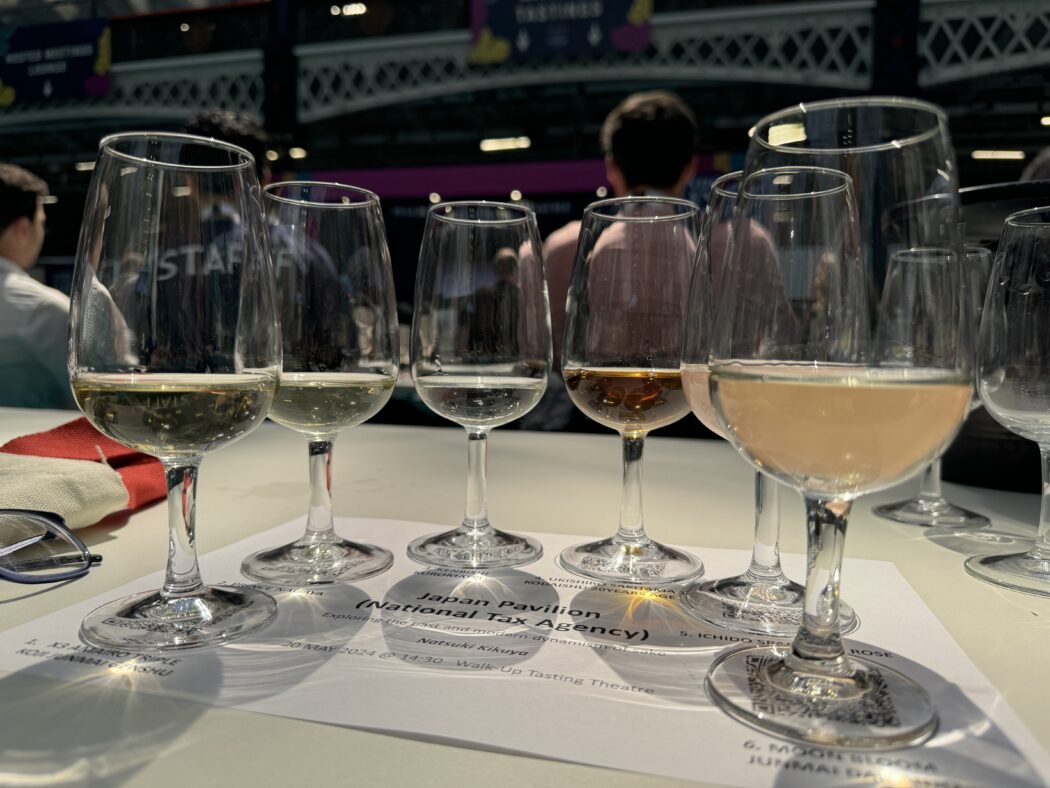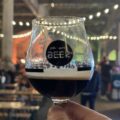A Highlight of the 2024 London Wine Fair
Although the London Wine Fair 2024 ended over a month ago, the tasting “Exploring the Past and Modern Dynamism of Sake” still echoes in my head and tastebuds as a significant highlight, enticing my palate with its profound journey through sake’s rich history.
.
Japanese Sake Through Time
We embarked on a 2,000-year journey of sake, starting from the Nara period, sampling ancient styles brewed for religious ceremonies. Natsuki Kikuya, Sake Samurai and founder of the Museum of Sake in London, guided us through her selection, enhancing it with insights into brewing methods, regional variations, and the delicate balance of flavours.
The journey highlighted key milestones in sake’s evolution, including the influence of the Shinto religion, where sake was considered a divine beverage, and the early use of chewed rice to start fermentation. Similar to the South and Central American beverage chicha, rice—or corn, in chicha’s case—was chewed to introduce amylase enzymes from saliva, converting starches into fermentable sugars. This chewed rice, combined with saliva enzymes and natural yeast, would ferment into an alcoholic drink known as kuchikami no sake, or “mouth-chewed sake.”
This method was thankfully abandoned with the introduction of koji around 600 BC, Japan’s national mould, which started the fermentation process without the need for chewing. While sake has always been associated with Japan, it is important to note that not all sake is brewed there anymore and “Nihon shu” is the geographical indication for sake made in Japan, and it’s made using only four ingredients: rice, water, goji and yeast.
.
Modern Masterpieces
The event featured six unique sakes, each representing different eras in Japanese culture and showcasing the innovation and artistry of contemporary brewing:
X3 Amairo Triple Koji Junmai Genshu
Era: Yayoi period
Prefecture: Akita
Style: High concentration of koji, three times the usual amount, reflecting the introduction of this fungi to Japan in that period. The result is a very rich and powerful umami character style of sake.
Tasting Notes: Nuts, apricot, kumquat, aromas and flavours, a rich and oily mouthfeel, quite sweet as well.
Cultural Connection: Represents modern sake’s diversity and refined flavours, a unique style that should be tested at least once in your life.
.
Prince Nagaya
Era: Nara period
Prefecture: Nara
Style: Traditional recipe found in ancient wooden scripts from the Prince’s grave, this is also a Junmai type of sake.
Tasting Notes: Umami, mushroomy sweetness, dates, low water, high koji quantity.
Cultural Connection: Highlights the historical roots of sake and ancient brewing practices that laid the foundation for today’s styles, this is a very sweet version that has similarities to noble rot style of wines such as Tokaji or Sauternes.
.
Kenbishi
Era: Edo Period
Prefecture: Hyogo
Style: Yamahai traditional style of brewing, which naturally introduces lactic acid to the fermentation process and fosters complexity of flavour.
Tasting Notes: Rice cracker, malt, miso, soy, savoury with low sugar
Cultural Connection: Reflects the Edo period’s shift towards less sweet sake to complement the increased sugar consumption of the era.
.
Ukishiro
Era: Edo period
Prefecture: Saitama
Style: Koshu, Aged Sake, this type of sake usually spends 3 to 5 years aging, which triggers a Maillard reaction, adding to the complexity of the flavour and taste, and became particularly elite due to the tax pressure put on breweries as they had to pay the tax for sake right after finishing brewing, which only got overruled about 50 years ago. This particular sake is aged 20 years!
Tasting Notes: Caramelised onion, soy sauce, savoury herbs.
Cultural Connection: Showcases how ageing processes create complex flavours, drawing from centuries of sake storage techniques.
.
Moon Bloom Junmai Daiginjo
Era: Heisei Period, where there’s been a lot of modernisation of sake including changing laws and releasing the first sparkling version of it.
Prefecture: Nagano
Style: Daiginjo, this classification was only introduced in 1992
Tasting Notes: Apple, pear, melon, floral, low umami, very delicate style.
Cultural Connection: Represents the 1986 highly polished rice style boom in Niigata and the role of female brewers in evolving sake craftsmanship.
.
Ichido Sparkling Rose
Era: Heisei
Prefecture: Fukushima
Style: Sparkling sake, introduced in 1998
Tasting Notes: Herby, funky, savoury, onion chutney, sparkling rosé made from red rice (the natural colour of this rice is purple-black).
Cultural Connection: Symbolises the youthful innovation in the sake industry, appealing to a new generation of sake enthusiasts.
.
A Taste of Japanese Culture
This delightful tasting not only enticed our palates but also fostered cultural appreciation, underscoring sake’s historical significance and its dynamic future.
The event was a standout at the fair, celebrating sake’s enduring legacy and its innovative advancements. As sake continues to gain global popularity, such events are crucial for deepening understanding and appreciation of this exquisite beverage.
This event, along with the broader array of activities at the fair, emphasises the diverse and innovative spirit I highlighted in my previous coverage. It exemplifies how the London Wine Fair continues to be a premier event for discovering and celebrating global beverage traditions.
 Museum of Sake
Museum of Sake
Natsuki Kikuya






